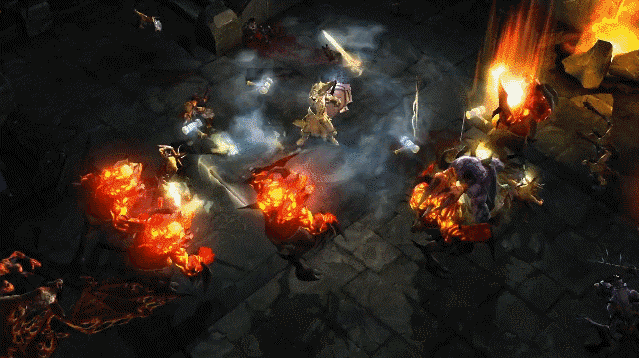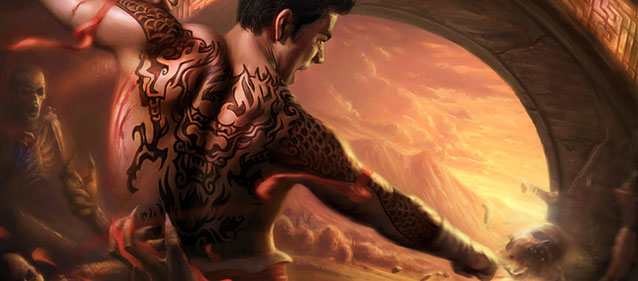

The first expansion to Diablo 3 is now available and has enjoyed a smooth launch. Servers did not go down, errors did not appear, and the game was playable ten minutes earlier than expected. And that’s just the tip of the awesome iceberg. Here’s five reasons while Diablo 3: Reaper of Souls retakes the Action-RPG throne for Blizzard.
Blizzard unleashed Diablo 3 2.0 about a month before Reaper of Souls went live. The patch re-balanced classes, added new multiplayer features, overhauled difficulty and drastically improved loot. In other words, it made the game what it should have been at release.
I’ve already covered the patch in an earlier post, so I won’t spend much time restating the reasons why 2.0 gave the game new life. All you must know is that it patched the cracks in the game’s foundation.

Diablo 3’s expansion adds one new act, and it can be completed in two to three hours if you leave the game’s difficulty on normal. This may seem a disappointment, but Act V is the best yet, and likely to give both veterans and newcomers a lot of enjoyment.
The game’s new threat is Malthael, who steals the black soulstone you used to trap Diablo at the end of the original game. His goal? To wipe out humanity, a race that, in his eyes, has been a constant source of evil and has allowed demons to recover from defeat time and time again.
While the threat is new, Act V wraps up some loose threads from the first four acts and puts you in the midst of a grim disaster-in-progress that harkens back to the original Diablo. The levels are more open-ended than those before, more random events have been added, there are several excellent boss fights, and you’ll even learn more about the Nephilim.
Act V is short, but worry not; it’s far from the only thing to do. The expansion also adds “Adventure Mode,” a random dungeon-crawl that asks you to perform certain objectives, such as finding and executing specific monsters. The reward, as you’d expect, is gold and loot.
This new game mode adds a much-needed layer of replayability to the game. Torchlight 2 paved the way for this with its Mapworks feature, and Path of Exile (which we’ve taken a look at here) followed. This left Diablo 3 with a campaign mode that could become tiresome because players had no choice but to replay it endlessly.
You have to reach level 70 to enter Adventure Mode, but unlocking it once unlocks the mode for all characters playing in the same league (i.e. unlocking it in softcore does not unlock it for hardcore characters.) This makes Adventure Mode perfect for veterans who are bored of the campaign but want to level new characters.
There was a healthy dose of skepticism about the new Crusader class prior to the expansion’s release. Much of this was due to the fact that Diablo already had two pure melee classes. The Barbarian can use a shield, and the Monk fills the holy warrior theme, so adding a new holy warrior who uses a shield felt kind of dull. The Crusader also lacks the baseline 30% damage reduction those classes enjoy.

Luckily, the skepticism was misplaced. The Crusader feels like it was designed by Dethlok; it’s metal as hell. You can throw spinning lightening hammers while your shield explodes on contact with the enemy and you call justice down from the heavens. Oh, and you can occasionally turn into a Space Marine.
In fact, the Crusader fills a much needed role; a melee class that can stand and fight. The Barbarian was the closest approximation to this in the base game, but most builds relied on health regeneration for longevity. The Monk, on the other hand, is a mobile striker who weaves in and out of combat. Crusaders wade into battle and punish their foes face-to-face with an unrelenting assault, and that’s awesome. And unlike some other classes, which can take a while to come into their own (Witch Doctor, I’m looking at you), the Crusader is fun and thematic from the very first level.
While the big features I’ve mentioned solidify Diablo 3’s recovery, they’re not the only things that matter. There’s a wide range of tweaks and extras that make the game a lot better.

One of my favorites is the mystic, a new crafter who can be used to “transmogrify” and enchant items. This means the look of an item can be changed to mimic another, and you can change one undesirable value on any item you loot. Did a legendary drop with a stat roll you didn’t like? Enchant it to something else!
Other enjoyable extras include new types of monsters, new skills for each class, and a whole new list of legendary drops. And what you receive at launch isn’t all you’ll get, as Blizzard has already announced plans for gameplay seasons (similar to what’s offered by Path of Exile) and ladders for both the softcore and hardcore leagues.
Diablo 3 is now the best action-RPG available. I say this as a huge fan of the genre and active admirer of Path of Exile, the game which was my default choice until Blizzard released the 2.0 patch.
The improvements made by the patch and the expansion aren’t great just because of what they add to the game. They’re great because they let the core gameplay, which was always good, shine. Hitting monsters in Diablo 3 is fun, and there are no questionable design decisions to obscure that.
I can think of just one downside, and that’s the value offered to casual players. Reaper of Souls is designed with fans of the genre in mind and delivers everything need to spend hundreds of hours with the game, but it’s not a terribly fleshed-out experience for people who simply want to play the campaign and be done with it.
This is true of most action-RPGs, of course, but Torchlight 2 was $20 and Path of Exile is free. Gamers unfamiliar with the genre may expect a longer fifth act from a $40 expansion.
Still, if you love this genre, the expansion will keep you playing for months. Diablo is back, and it feels great.




 Review: Armello
Review: Armello Rock In Rio (USA) 2015 lineup includes Sam Smith, Magic!, Jessie J, Gary Clark Jr. and Ivete Sangalo
Rock In Rio (USA) 2015 lineup includes Sam Smith, Magic!, Jessie J, Gary Clark Jr. and Ivete Sangalo Looking For Wii Homebrew Apps? These Are The Places To Go
Looking For Wii Homebrew Apps? These Are The Places To Go Top 5 Most Wanted Unlikely RPG Sequels
Top 5 Most Wanted Unlikely RPG Sequels What Is the Best Way to Stream Music for Free on Android?
What Is the Best Way to Stream Music for Free on Android?